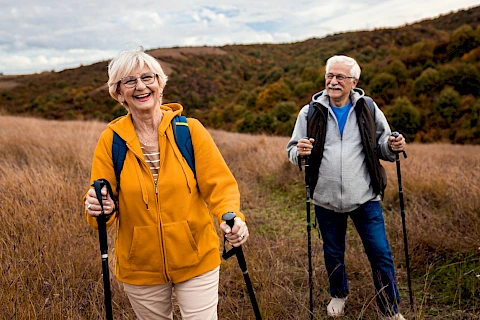
We know it's fall when the leaves change color and temperatures begin to drop. Autumn is a beautiful time of year. However, autumn also brings unique risks, particularly hazardous for seniors. Knowing these risks and how to mitigate them is crucial for ensuring the safety of our senior loved ones. Senior Helpers of Tucson shares the most significant autumn risks for older adults and provides tips to help keep them safe.
What are the Six Biggest Fall Risks
Preventing accidents and illnesses always starts with knowing how and why they may occur. Read on to learn more about the most prominent risks of the autumn season.
Slippery Leaves
Fallen leaves provide a signature sight of autumn. But these colorful leaves also pose a significant risk. Wet or decaying leaves make walkways incredibly slippery, increasing the risk of falls. Regularly clear walkways of leaves to prevent this hazard, especially after rain. Encourage seniors to wear shoes with good traction for better grip and stability. If necessary, suggest using aids like walking sticks or walkers for additional support.
Shorter Daylight Hours
As the days get shorter, it becomes dark much earlier, making trips and falls more likely, especially in the early morning or late afternoon. To combat the risk of falling, ensure that your home's exterior lights are functioning and provide sufficient illumination. Try to schedule walks and outdoor tasks for daylight hours. When walking in low-light conditions, use reflective gear to increase motorists' visibility.
Wet and Icy Conditions
Autumn often brings unpredictable weather, including rain and the occasional early frost. These conditions can result in wet and icy walkways, which are dangerous for seniors. Stay informed regarding the weather forecast and prepare accordingly. Apply salt or sand to icy paths to improve traction. If conditions are terrible, it's safest to stay inside until they improve.
Cold Temperatures
The chill in the air can be more than just uncomfortable; it poses specific risks like hypothermia for seniors who may be less able to regulate their body temperature. Encourage dressing in layers to stay warm and adjust if temperatures change. Ensure your home stays at a safe, warm temperature. Remember to keep hydrated, as it's easy to forget to drink water in colder weather.
Seasonal Illnesses
Fall is also flu season, and seniors are more susceptible to seasonal illnesses that can lead to severe complications. Getting a flu shot helps protect against the most common strains. Maintain good hygiene by regularly handwashing and using hand sanitizer to reduce the risk of getting sick. Limit visits to crowded locations, especially if your senior loved one is immune compromised.
Home Heating Hazards
As the weather cools, many people turn on their heating systems, which can present risks, including fire hazards and carbon monoxide poisoning. Ensure that you get your furnace or heating system inspected and serviced annually. If using space heaters, keep them away from flammable materials and never leave them unattended. Install carbon monoxide detectors to alert you to dangerous levels, giving you time to react.
You Can Count on Us for Help
Autumn is a beautiful season, but it does come with challenges for older individuals. By taking proactive measures, such as clearing walkways, ensuring proper lighting, monitoring weather conditions, dressing warmly, staying healthy, and maintaining heating systems, you will significantly reduce the risks of this time of year.
The safety and well-being of your elderly loved ones are paramount. If you need professional assistance in ensuring their safety, contact us at Senior Helpers Tucson. We proudly serve the communities of Tucson Southeast, Oro Valley, Vail, Sahuarita, and Marana. We would love to tell you about our services for seniors and their caregivers, such as Companion Care and Chronic Disease Care.